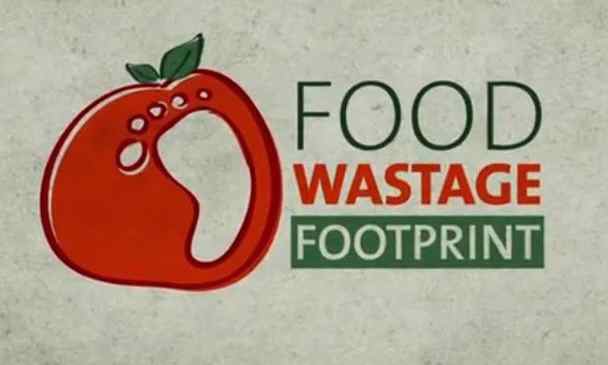The U.N. Food and Agriculture Organization (FAO) has implemented the Food Wastage Footprint project, designed to address food loss, “the decrease in edible food mass at the production, post-harvest and processing stages of the food chain,” with food waste, “the discard of edible foods at the retail and consumer levels.” Each year, according to FAO, “approximately one-third of all food produced for human consumption in the world is lost or wasted.” Food Wastage Footprint uses a concept of full-cost accounting, which emphasizes the inclusion of all costs, including environmental and societal, into the price of food. According to Nadia El-Hage Scialabba of FAO, “People have no idea of how much food is wasted and even more so, its huge societal costs.”
The Food Wastage Footprint project utilizes the concept and logo of a footprint to symbolize the mark that wastage is making on the environment and its real costs to people. Scialabba adds: “The concept of an environmental footprint unveils hidden costs that are being paid by everyone: if we pay one dollar for a food item, we are paying roughly another dollar for repairing the environment and another dollar on health expenditures.”
Full-cost accounting literally takes into account the often ignored costs of food production. Scialabba explains: “Most environmental costs are based on actual damage costs that taxpayers and citizens of the world are helping finance. Social wellbeing costs follow a cutting edge methodology that valuates as accurately as possible, the impact of environmental degradation caused by food wastage on individuals’ health, due to pesticide exposure, and livelihood loss and conflict, due to soil erosion.”
The battle against food wastage is multifaceted. One of the most important fronts is at the retail and consumer level, where approximately 222 million tons of food are wasted annually in developed countries. Scialabba believes full-cost accounting has the potential to bring together different stakeholders in the food system. “Full-cost accounting brings understanding on the real value of food and hopefully, a correction in production and consumption patterns by both consumers and policy makers. For example, a realization of the climate impact of food wastage induces environmental constituencies to partner with agricultural constituencies in looking for solutions or investing in mitigation measures.”















